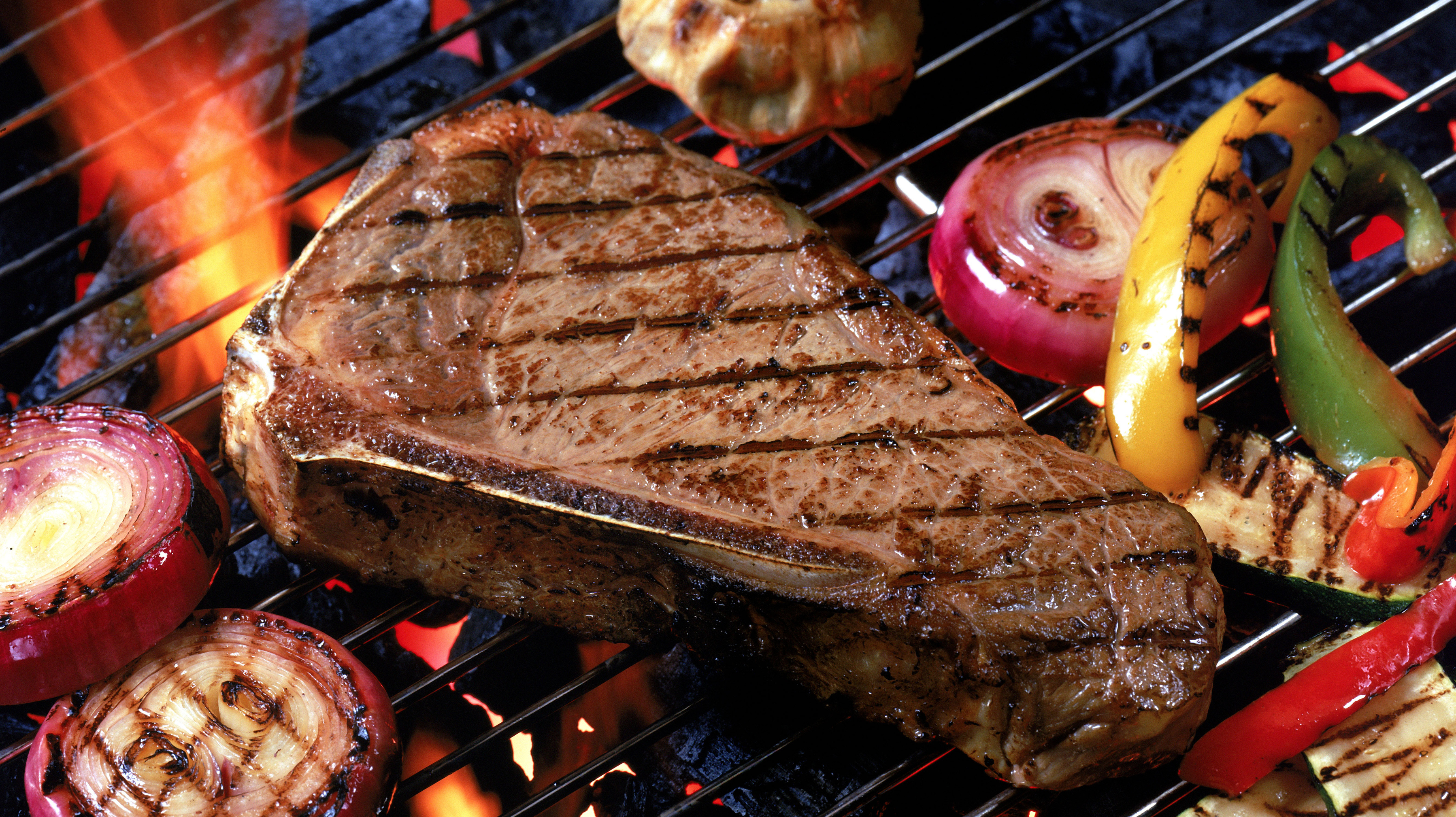How Can You Tell Meat Doneness Without A Thermometer?
You can purchase a meat thermometer for just a few dollars at the dollar store, or for a three-figure version from Sharper Image. But if you're me, you usually can't find it when you're looking for it (I also have to frequently check the correct temps for doneness levels, so that the pork won't kill us all at 140 degrees). Or what if you're out camping, flipping burgers, and forgot to pack the appliance? Or grilling steaks on the beach? Much like opening a wine bottle without an opener, is there a way to test for doneness with no thermometer in sight?
To find out, we spoke with a variety of chefs, who have years of experience evaluating meat doneness. Many praised their no-doubt-quite-fancy meat thermometers, but most had a more organic, appliance-free method to be used in a pinch. As Jesse Valenciana—founder and president of Chicago grilling organization ManBQue, and author of ManBQue: Meat. Beer. Rock N' Roll—explains, "Let me make it clear, I always have a thermometer on me when I know I'll be cooking meat for others. It takes the guessing game out the equation. One weak argument against using thermometers is that they steal the soul from the steak, the other is that the small puncture releases too many of the delicious juices; I'm calling b.s. on both. Regardless, these other two 'tricks' work in case you end up using your last $10 on hot dogs at the Home Depot instead of that soul-stealing thermometer."

Valenciana described the "hand palm technique," which he calls "the most popular of the steak-doneness tests." You start by relaxing your hand, then take the index finger of your opposite hand, and push down on the fleshy part of your palm closest to your thumb. That softness from your relaxed hand is what a raw steak feels like.
Then, press the tip of your index finger to the tip of your thumb, and feel your palm again. That's what a steak cooked rare should feel like. You continue down the line of fingers: tip of your thumb to middle finger is medium rare, thumb to ring finger is medium, thumb to pinky and you have a well cooked steak—"perfect for that sociopath in your life," Valenciana says.
Jim Tate IV, executive chef of Messhall Kitchen in L.A., has a finger method that's even less complicated than that, just based on "temping" the meat by touch. "I cooked my first tri-tip at the age of 13, on a homemade Santa Maria grill that my grandfather had specially made for him by a friend, which has since been passed on to me. With my grandpa watching carefully over me I learned the art of temping by touch." He says all you need is your index or middle finger, pressed against the piece of meat: Squishy is rare; hard and firm is well done. "The in-between temps require lots of practice and trial and error. I learned pretty quickly, and I am very rarely off my mark," he says.
Tate, by the way, disagrees with Valenciana when it comes to whether poking with a meat thermometer is advisable: "I think it's a sin to just poke holes in perfectly cooked piece of meat, before has the time to properly rest. All you're going to do is let out all of juicy awesomeness."
Valenciana points out a third method, which uses touching your face instead of your hand (and all those fingers): "Relax your face, touch your finger to your cheek; that's a rare piece of steak. Touch your chin, should have more resistance, that's medium. Now touch your forehead—Botox aside, there should be some flesh but more resistance like a well-done cooked piece of meat should feel like."
If you can't find the meat thermometer (or your face) but have another kitchen gadget on hand, you may be able to use the method recommended by Brent Balika, executive chef at Margeaux Brasserie, in Chicago's Waldorf Astoria. He says the kitchen's standard is to use a cake tester (basically a stainless steel stick) to differentiate temperatures of meat. "Simply poke the meat and allow the cake tester to sit for a couple of seconds and pull it out and touch it to the outside of your lip." Cold is rare; slightly warm is medium-rare; warm is medium; between warm and hot is medium-well; hot is, he says, "no bueno."
All of these seem extremely helpful, but I think I may prefer Tate's, experimenting with different levels of squishiness. And you know that in a worst-case scenario, you can cut into your steak or burger to gauge its level of pinkness (while keeping in mind that pink in chicken or pork is a no good, very bad thing).
But the tech-free method might be the way to go, especially if you can play it off like Valenciana advises: "If you forget your thermometer at the next grilling sesh, instead of admitting you might be an idiot, just let your guests know you have some 'life hacks' you want to try out." Who knows, taste-touching by using your index fingers and foreheads may turn into some weird party contest, with your friends offering their own thermometer-free methods.
